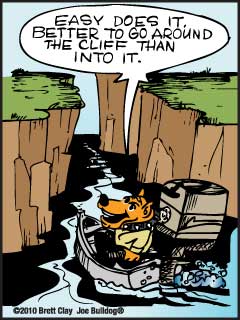Change Leadership — Secret # 59
Reduce Tension
The most important thing about power
is to make sure you don’t have to use it. —Edwin Land
What I Need to Know |
Remember that Kurt Lewin defines tension as the sum of the driving forces and the resisting forces. Also recall that every force has an equal and opposite force. So if you increase the driving force, the resistance increases—and all you’ve achieved is more tension. Nothing else has changed.
If the driving forces are truly overwhelming, then you could drive the change right over the resistance.
In The Art of War, Sun Tzu says the forces have to be at least five to one, if not ten to one, before overwhelming the opponent can be safely attempted.
But, Sun Tzu pragmatically says, “The skillful leader subdues the enemy’s troops without any fighting; he captures their cities without laying siege to them, he overthrows their kingdom without lengthy operations in the field.” He continues, “Military tactics are like water; for water in its natural course runs away from high places (the opponent’s strengths) and hastens downwards (to the opponent’s weaknesses).” In change leadership, the high and low places are areas of high resistance and low resistance.
In The Prince, Machiavelli wrote about princes who eliminated resistance—literally.
So, it seems there is general agreement among great leaders and scholars—reducing tension by reducing both the driving and resisting forces is far more effective and efficient than attempting to overpower the resistance.
What I Need to Do |
First, understand the resisting forces both qualitatively and quantitatively.
Then, try to reduce or eliminate resisting forces one by one. For example, if a stakeholder is reluctant to change because of perceived risks, find ways to mitigate or reduce the risks down to acceptable levels. Or if people are resisting because of a lack of familiarity, communicate and, if possible, demonstrate the new situation. Do it over and over until they say, “Okay, that’s enough! I get it.”
Next, try to work within or around the “high places,”—areas of high resistance. Ultimately, this may require plain old compromising.
Finally, the remaining resistance will simply have to be overcome. Make sure the resources required to make the change are fully committed and are fully capable of making the change, despite the resistance.
Action Summary |
|
 |



Social